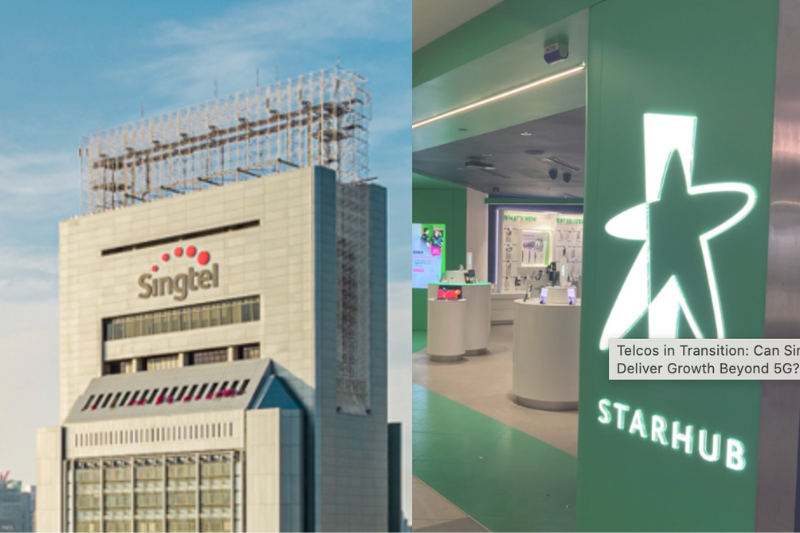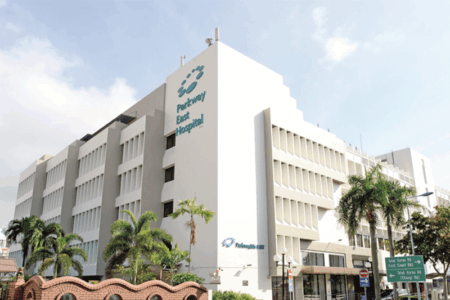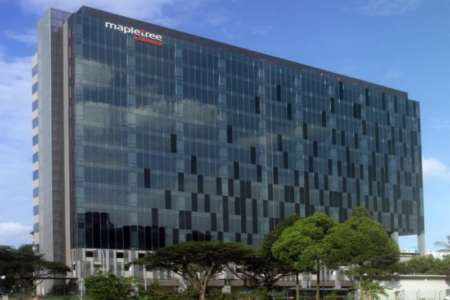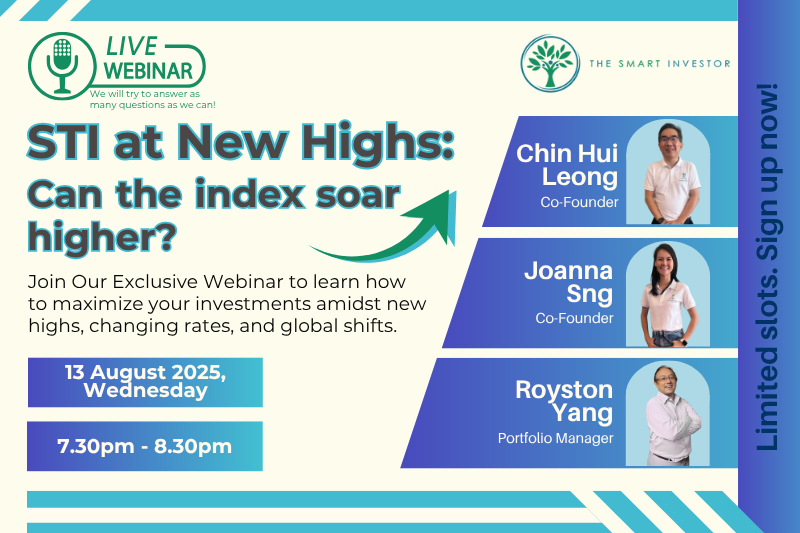Singapore telecom companies such as Singtel and Starhub have long been heralded as defensive stalwarts, prized for their steady dividends.
With the 5G rollouts maturing, investors may have the following question: Will these telecom businesses revert to a low-growth cycle, or can they find new growth opportunities?
The Telco Business Model in Transition
Although the mobile and broadband businesses provide resilient cash flows for telcos, their growth has stagnated.
Mobile subscriptions in Singapore recorded a compound annual growth rate (CAGR) of 4.3% from 2021 to 2025.
Unfortunately, average revenue per user (ARPU) has declined 30% from 2018 to 2023. Recent developments have not improved, with Singapore’s mobile ARPU trailing regional peers.
Despite lower mobile ARPU, both telcos are expected to spend a total of S$1.93 billion on capital expenditure for 5G in Singapore and other countries.
In search of further growth, the telcos have been diversifying into other business areas such as information and communications technology (ICT), data centres, enterprise services, and digital solutions.
Such moves enable the transition of Singtel and Starhub from “pipe providers” to full digital infrastructure players.
Singtel
Singapore Telecommunications Limited (SGX: Z74), or Singtel, has an undeniable local presence in telecommunications.
The local telco also has a strong regional presence in neighbouring Asian countries through its subsidiaries such as Airtel and Telkomsel.
Singtel has been growing its exposure to data centres, ICT services, and digital infrastructure.
Let us see if Singtel’s financials have been benefiting from their recent foray.
In the first quarter of FY2026 (Q1 FY2026), Singtel’s revenue was stable at S$3.4 billion, while underlying net profit grew 14% year-on-year (YoY) to S$686 million.
This was aided by strong profit-after-tax (PAT) growth from Singtel’s regional businesses.
Airtel’s PAT, which was 41.4% of Singtel’s share of the regional businesses’ PAT, surged 142.5% YoY to S$194 million.
In Indonesia, Telkomsel’s PAT weakened 26% YoY to S$115 million (24.6% of regional PAT). Globe, which operates in the Philippines, saw its PAT slide 12% to S$59 million.
Thailand, through Singtel’s AIS subsidiary, rounds off the segment with a strong 37% YoY increase in PAT to S$101 million (21.6% of the segment’s PAT).
In March 2025, Singtel announced that it plans to spend S$1.7 billion on capital expenditures for its core business. An additional S$0.8 billion for new initiatives is expected to be invested by 2028.
Singtel’s most recent core dividend of S$0.123 per share for FY2025 represents a 82% payout ratio and a dividend yield of roughly 2.9% given its current share price of S$4.31.
Do bear in mind, this is excluding Singtel’s additional dividend from its capital recycling program.
Singtel’s growth prospects lie in its ability to monetise its data centres and cell towers.
StarHub
Starhub Limited (SGX: CC3) is a strong local telecommunications company that stands out with its bundled services and growing enterprise solutions.
Starhub has been diversifying into cybersecurity, cloud, and digital platforms.
The company’s DARE+ program has reduced costs – thus boosting profit margins – while allowing it to invest in new growth initiatives.
In Starhub’s latest earnings update, for the first half of 2025 (1H2025), revenue was stable at S$1.1 billion.
But net profit dropped 42% YoY to S$47.9 million, owing to a one-time penalty (700MHz spectrum).
Revenue from Starhub’s consumer segment was down 3.9% to S$501.8 million, while its enterprise segment grew 6.8% YoY to S$296.1 million on the back of strong cybersecurity services (up 20.1% to S$178.2 million).
Mobile ARPU came in at S$20 while broadband ARPU was S$36. Both were largely stable.
A steady dividend payer, Starhub is guiding for a dividend of at least S$0.06 per share for 2025.
At a share price of S$1.16, Starhub has a dividend yield of 5.2%.
Do note that Starhub’s dividend has increased in recent years, from S$0.05 per share in 2022 to S$0.067 in 2023 and S$0.062 in 2024.
Key Challenges Ahead
Singapore’s telecom industry is highly competitive, with 5G monetisation not expected to contribute to returns for the next few years.
Both Singtel and Starhub have heavy infrastructure commitments.
Singtel is expected to spend around 12% of its total revenue on capital expenditure (capex), while Starhub is guiding for capex to be 10% of revenue.
Singtel’s debt of S$11.7 billion as of 31 March 2025 is not egregiously high compared to its annualised earnings of S$2.7 billion.
Starhub has total borrowings of S$1.3 billion, with an annualised operating cash flow of S$234 million.
On a valuation standpoint, Singtel is trading at a rough price-to-earnings (P/E) ratio of 22 times, which trails the last three years of 27.6 times.
Starhub has an approximate P/E of 16.8 times versus its three-year average of 17.2 times.
What This Means for Investors
Singtel and Starhub have been pursuing higher-growth business initiatives such as ICT and digital infrastructure.
Dividends for both companies provide stable income, but both businesses depend on continued execution in their new growth initiatives.
Investors should think about their stable dividends in the context of their future growth initiatives.
Get Smart: Core Business Provides Stable Dividends, with New Growth Initiatives
Singapore’s main telecom players are no longer reliant on 5G networks. Their future depends on their transformation into digital infrastructure and enterprise.
Their opportunity lies not only in their stable core business; these giants are reinvesting for growth.
This new 10-minute read could change how you invest this year. Inside:
5 SG dividend-paying blue chips that have quietly powered through past downturns, and could reward you handsomely in the next. Grab the free report now. It might be the most profitable thing you read today.
Disclosure: Wesley owns shares of Singtel.





